Blog 10
I believe that I achieved the course objectives and have gained a further understanding in the study of social psychology. I honestly feel like I could recite the experimentation rules for behavior analysis in my sleep, it is one of the most important objectives for my future career. I also think that I have further developed as a person through learning the objective two (attempt to understand others). I also believe that I have gained a better understanding in the third objective (understand the formation and change of attitudes in relation to behavior). The fourth objective about understanding prejudice and discrimination was probably my favorite to learn about because before the course I firmly believed that prejudice and discrimination was a learned behavior, and this course helped to further explain that. Finally, the final course objective (to make connections between course and outside experiences) was achieved on multiple occasions through the assignments and the assignment takeaways. My attitudes toward social psychology have changed, where I have more respect for social psychologists than I did before. If I took the class again, I would do my assignments all ahead of time so I wouldn’t stress myself out. Over the last few months, I have grown academically through taking this course because I feel like I could help others with this course to a well-established extent. The experimentation on behavior analysis and the rules for it will be the most helpful in my professional life as an art therapist, as well as building relationships with my future clientele.
Representational Visual Image:
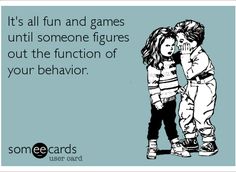
I feel like this meme is a visual representation of me. Throughout the class I have found or made memes that apply to the prompts at hand. This meme is me in general conversation after this course talking about everything I have learned.
Blog 9
Over this semester in this course, I have learned many new things and have expanded upon many basic things from a basic level psychology course. The top three things I have learned in this course are as follows.
Number one: One of my absolute favorite things that I learned and was expanded upon were social heuristics. I started with the basic knowledge of how we process thoughts and what schemas were, but other than that I had no knowledge of a heuristic. I learned the four main types of heuristics and when/ how they are used. The four main types of heuristics are the representativeness heuristic, the availability heuristic, the anchoring and adjustment heuristic, and the status quo heuristic. I took this basic knowledge I acquired and formed my first blog post’s visual artifact by constructing a meme based on the representativeness heuristic. This later tied into one of my top artifacts from Module four, where I made an in-depth argument about the effects that media has on our heuristics and schemas. In all reality, I think this is the information that has stuck with me longest throughout the course because I was able to connect it to an effect I already knew before, which will be discussed in the last part of the blog.
Number two: The second favorite thing I learned had to do with the attractiveness unit. The entire unit was one of my absolute favorites, especially being someone described as a romantic. I love knowing the ins and outs of why I love who I love, and how/why my partner and I get along or do not get along. Its easy enough to settle on the fact that we are similar and that’s why we like each other or that we are different and that is the reason behind liking each other. Despite not publishing assignment four, my current partner and I filled out the relationship test and got shockingly similar results, despite coming from almost completely different backgrounds. These results connected back to the Top Artifact from Module three, where I asked many of my friends the two issued prompts if they believed similarity-based attraction or differential based attraction based on the quote they received. This tied right back to heuristics, where availability heuristics could have possibly affected their choices.
Number three: The third favorite thing I learned in this class was more about myself. Not one course had me thinking about how I fit in social settings like this one did. Blog two had me assess my general-self-efficacy and helped me to evaluate who I was as a person. However, Module six made me assess which traits best described me, who I really thought I was and when I showed those traits. Then, Module five also made me look at myself through a self-enhancement lens or how I portray myself to the world. Which finally connects back to the Assignment Two Takeaway, where I was able to conclude how I saw myself and thought about myself, and how these perceptions changed based on my “social self.” These evaluations through the assignments helped to influence how I portray myself and how I carry myself daily because I became more aware of my traits and actions way more than I have before this course.
Connection Piece: My final paragraph of this blog is to connect one major thing I learned in this course and apply it to another course I have taken. I have chosen the aspect of the media and its affect on heuristics. In this course, I learned how the media will portray certain groups of people and therefore, push into our representativeness heuristics and alter them. Media could be considered a main cause of our prejudice and discrimination because of the building of these availability and representativeness heuristic. However, in my first ever psychology course back in 2018, I learned the effect of media on heuristics or our schemas, but instead of socially, it was reflected on the individual. Hence, media could be seen as one of the influences of exposure to body dysmorphia and the development of eating disorders, as I learned in the abnormal unit of that class. This class taught me heuristics affect not only the self, but also groups and the self in social settings as well.
Representative Visual Image:
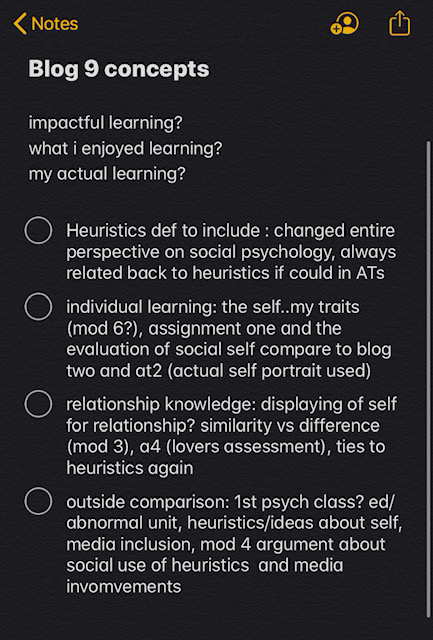
This image is how I comprised all of my assignments and organized them in connection to better understand how they connected to fulfill the requirements of this blog.
Blog 8
The article by Nathan DeWall, “Sexual Conflict: Uncovering the Mysteries of the Mating Background,” revolves around how men and women anger one another in three sections of a relationship: Prior to Consummation, After the Relationship, and Post-Breakup. Before dating, the article says that men will lie about being emotionally involved and wanting a relationship, rather than just stating the want for sexual interaction. Women, on the other hand, will lie about wanting sexual interaction rather than be truthful and secure the relationship without sexual interaction. During the relationship, men will anger women in almost the same way women anger men: through insecurity and distrusting behavior revolving around jealousy. After the relationship, the article agrees that both men and women enact stalking behavior to either revive the relationship or make the other jealous by how well the individual is doing. However, men also tend to anger women while in and before the relationship by being controlling; for example, the man will tell the woman what she can or cannot wear. Women easily anger the man in the same manner by attempting to control who they go out with, as a form of jealousy. Hence, the repetitive theme here is jealousy. It seems as if jealousy is the key problem in sexual related conflict, especially after reading this article.
Representative Image:
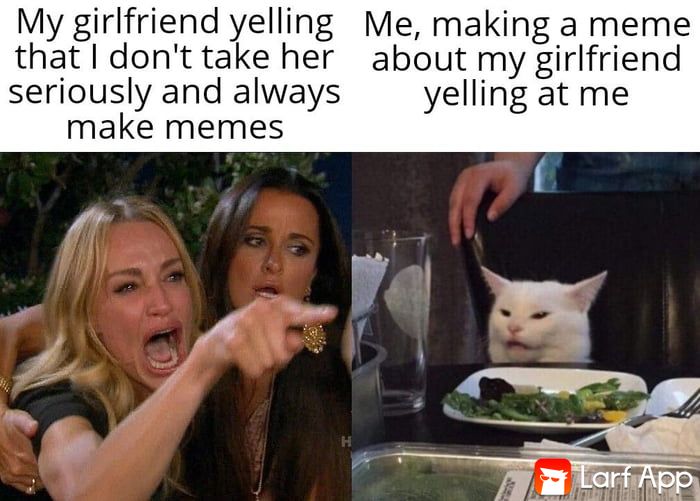
Image One: https://memesticle.com/relationship-memes/
Image one represents a woman getting mad at a man, and a man not changing his ways to correct his behavior. In many heterosexual relationships, this is the typical problem women express: after men achieve the sexual interaction, they no longer put effort in the relationship, aka “not listening.”
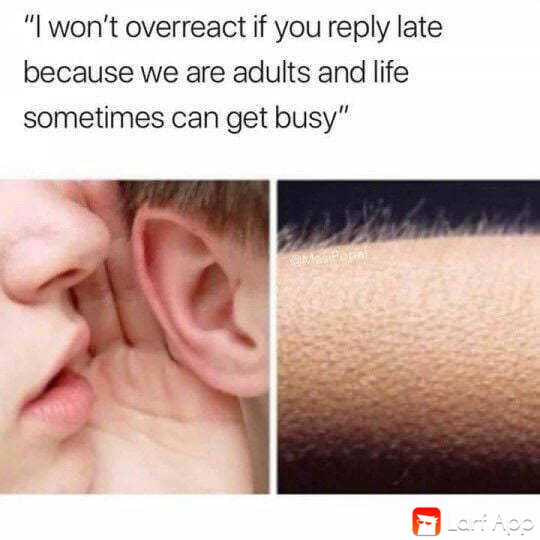
Image Two: https://memesticle.com/relationship-memes/
Image Two is another meme regarding the sexual conflict explained above. This one references how women anger men, especially those who are extremely insecure. Those types of men are easily angered by women who do not reply immediately, and those men feel jealousy as they believe the women in not being honest.
Blog 7
Emotional Intelligence, according to the Linda Ferguson video, is how we feel and how we respond to those feelings, and our knowledge about those feelings. Controlling emotions, or deescalating emotions, is a part of self-regulation and leads to a higher emotional intelligence. This is where the neocortex is in more control of the body’s thoughts and actions. Irrational behavior, or feeling “upset,” can lead to lower emotional intelligence and increase self-judgements. However, grounding techniques, a stem of self-regulation, can be extremely helpful in calming and analyzing thoughts and actions, leading to a higher emotional intelligence. In short, those that are more aware of their feelings and thoughts-thus more self-regulated- tend to have a higher emotional intelligence. My emotional intelligence is based on a daily range of how I conquer my self-destructive thoughts as I battle my depression; however, with knowing the cause of my feelings and self-destructive thoughts, and rethinking, or analyzing, them I can belittle those thoughts and regulate my emotional intelligence. One of my biggest flaws in self-regulation leads to self-destructive behavior and can harm my emotional intelligence; however, with similar grounding techniques Ferguson mentioned in the video, I can begin to increase both my self-regulation and my emotional intelligence.
Representative Visual Image:
This image represents my results from an EQ (emotional intelligence) quiz. My score of 123 was a bit surprising; however, I believe it stems from both my personal knowledge of trauma healing and from my educational knowledge of psychology.
Weekly Blog 6
In this video, Jean Kilbourne discusses the harmful objectification of women in the media through advertisements. Kilbourne hits on the topics of sexualization in adverts and how the United States is obsessed with specific parts of the female; thus, idealizing the woman through objectification. She claims that “sexy sales” in her video and how this objectification and idealization of women in advertisements in the media have a negative effect on the mental health of women. Though correlation does not equal causation, the countries in which the media features extreme objectification and sexualization of the female- like the United States- typically have higher rates of eating disorders in younger teens, as well as higher rates of teenage pregnancy. This video shows the true representation of gender differentiation between the male and female in the United States specifically. This utter dehumanization has been seen since the beginning of advertisement in the media and continues now in the twenty-first century, as if nothing has changed despite the uproar and demand for equal rights from women throughout the timeline. As follows are advertisements across the technological timeline of media that dehumanize, sexualize, and objectify women in some of the worst ways possible.
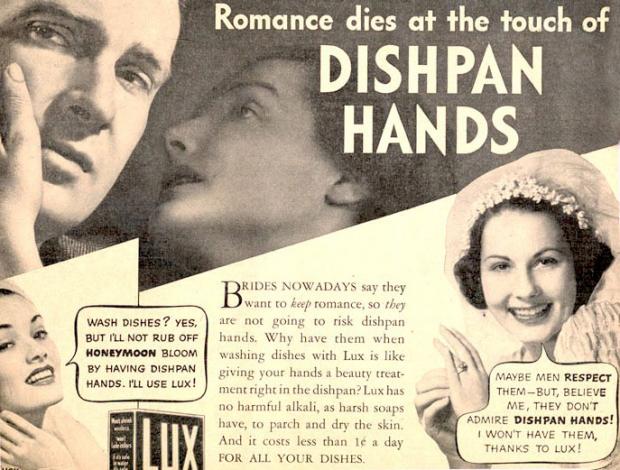
Advertisement One http://mentalfloss.com/article/67885/selling-shame-40-outrageous-vintage-ads-any-woman-would-find-offensive
I chose this advertisement because it was one of the vintage advertisements from the early sixties to early seventies. It doesn’t show sexualization of the female, but it shows the woman as lesser to the man and objectifies her as a servant put on earth to please the man. This ad shows the displaced equality of the woman to the man by pure dehumanization as mentioned by Kilbourne.

Advertisement Two http://mentalfloss.com/article/67885/selling-shame-40-outrageous-vintage-ads-any-woman-would-find-offensive
Advertisement Two was made in the late 50’s early 60’s and begins to show the woman in a sexual manner by, as mentioned by Kilbourne, deconstructing the female form to focus on the more prominent sexual features. The female in the ad puts on a magical lipstick and once again makes herself perfect for the man to please him as seen in Advertisement One.
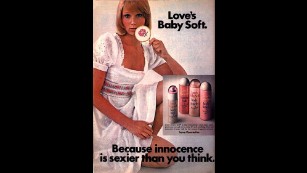
Advertisement Three https://www.cnn.com/2015/07/22/living/seventies-sexist-ads/index.html
Advertisement Three reflects exactly the type of media advertisements that Kilbourne was referencing. This ad does all three: sexualize, objectify, and dehumanize. The female is dressed like a little girl, but highly sexualized in order to promote this lotion. It seems like it would be way too much for a magazine ad; its almost pornographic how the female is portrayed.
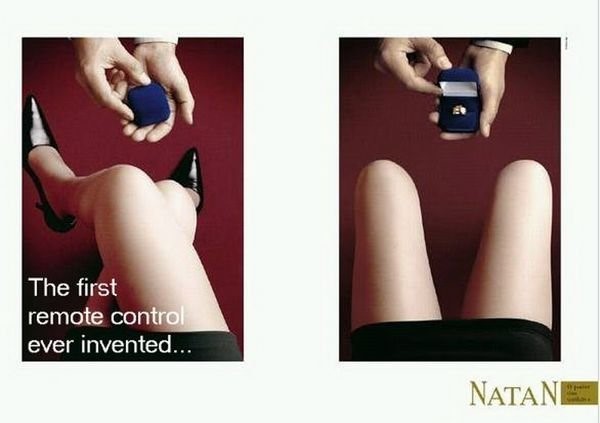
Advertisement Four https://www.scoopwhoop.com/inothernews/sexist-advertisements/
This advertisement surpasses all the other advertisements in dehumanization and sexualization. The ad is portraying that a woman’s sexuality can easily be bought with jewelry and that a woman is naïve and easily fooled by a man’s deceit. This is the primary example that Kilbourne would say is a correlation to teenage sexualization and pregnancy.

Advertisement Five https://www.scoopwhoop.com/inothernews/sexist-advertisements/
This American Apparel ad shows a unisex shirt, but its easy to see the difference that Kilbourne was talking about between the female and the male in the media. The man is portrayed in normalcy, where the woman is highly sexualized and thus, dehumanized when compared to the man.
Representative Visual Image:
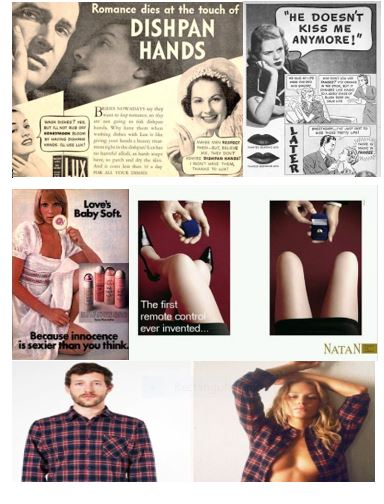
(1)http://mentalfloss.com/article/67885/selling-shame-40-outrageous-vintage-ads-any-woman-would-find-offensive (2) http://mentalfloss.com/article/67885/selling-shame-40-outrageous-vintage-ads-any-woman-would-find-offensive (3) https://www.cnn.com/2015/07/22/living/seventies-sexist-ads/index.html (4) https://www.scoopwhoop.com/inothernews/sexist-advertisements/ (5) https://www.scoopwhoop.com/inothernews/sexist-advertisements/
This image is a combine image of all the advertisements mentioned above, read from left to right and top to bottom.
Blog 5

Picture A represents a credible source, as the information is derived from a World Health Organization Fact Sheet, which is a highly credible and trustworthy source. Thus, it promotes expertise from credible scientists, and this promotes a very trustworthy aspect of the source. It also argues for the safety of all, rather than states one object is better than another, which takes away the distrust of harmful bias, as the ad singularly reflects a fact-based issue.
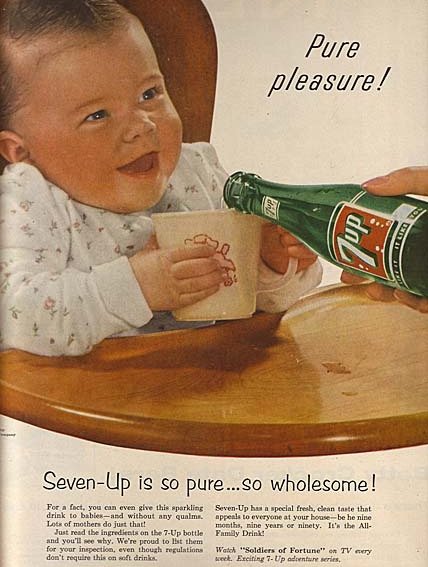
https://www.cracked.com/article_18772_13-wildly-irresponsible-vintage-ads-aimed-at-kids_p2.html
Picture B represents a noncredible source advertisement because it appears to put the profit of Seven-Up over the health of children. Using a child to persuade over facts may have worked when the advertisement first came out, but when the advertisement is put into retrospect with the knowledge that we as viewers know now, soda should not be given to children. However, it appears to be credible at first because of the joy of the child and the long blurb following the advertisement, yet, it loses credibility because the attempt to persuade to buy Seven-Up is at a financial stake and purely biased.
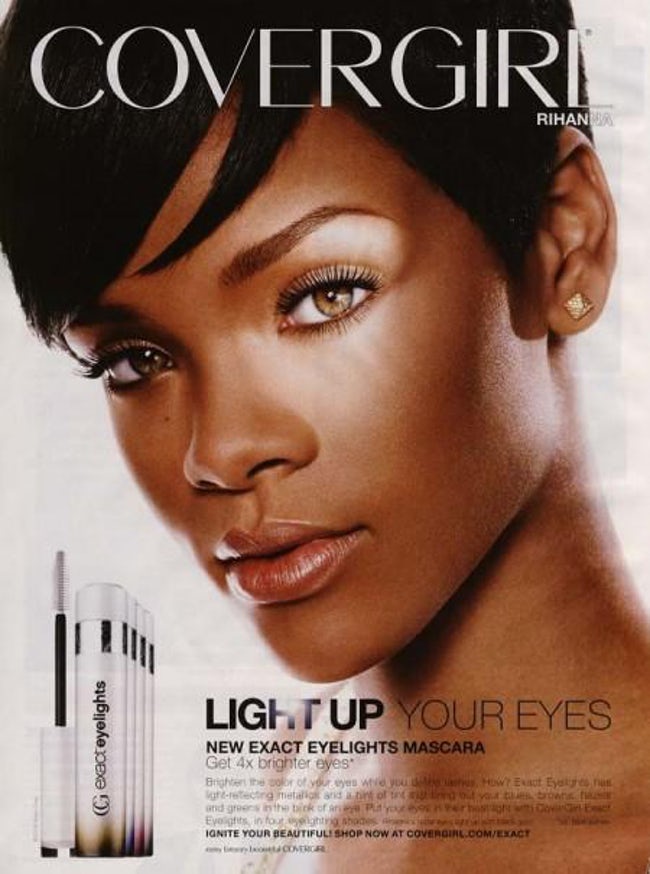
https://www.ranker.com/list/most-successful-celebrity-endorsements-v1/celebrity-lists
Picture C represents an attractive source for advertisements because of the use of Rihanna as a celebrity endorsement. Most people will think that because Rihanna is endorsing the product that the advertisement is credible; however, Rihanna gets paid for this advertisement and may not even use the product. Attractive sources are not always credible because anyone will pose for a picture or endorse a brand for the right amount of money, so bias will always be a factor.
Representative Visual Image:

I made this image because it contains all three advertisements described in Blog 5, and places them in numerical order. By placing all the advertisements next to each other, the contrast between credible, non-credible, and attractive advertisements are clearly shown.
Blog 4
Reviewing the questions I missed on the first exam was extremely valuable. In some instances, I confused common terminology, which was easily fixed by reviewing the material and finding the correct answer myself. I also believe through this process, where I find the correct answer, instead of it being given to me, helps to instill the knowledge further, rather than easily forgetting it again. For exam one, my study strategy relied on how I have studied for other classes: a review of the notes and doing the study sheet over a course of three days. However, I took the test right after finishing the study sheet. I should have given myself another day, where I reviewed the entire sheet and the jeopardy videos in the modules before taking the exam. Reviewing the first exam results will help on future exams, because now I know what I should change in my study habits and review habits to achieve a better score. It also helps in reference to the types of questions that will be featured on the next exam: some will be applications of learn concepts, which I wasn’t prepared for initially. Now, I should be better prepared for the next exam.
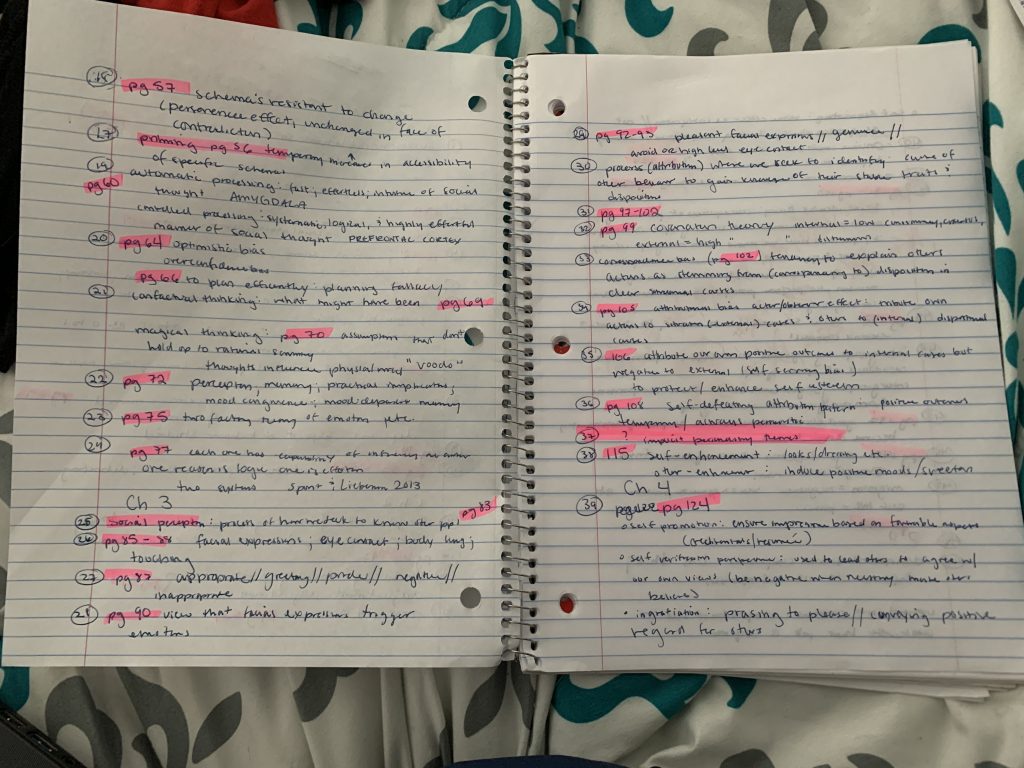
I chose to include this snapshot of my study guide for exam one as a reference of how I studied. I answered all the questions asked and marked the page number in the textbook to return and reread those specific pages before taking the exam. However, as mentioned above, if I had given myself another day to review all the course material at once before actually taking the exam, I believe I would have done better.
Blog 3
Music has been used throughout the decades to enhance emotions and establish connection with another person. Especially the latter; for example, Beethoven wrote his most famous sonata for one of his students he fell in love with but made it completely impossible for her skill level when he realized she did not love him back. In modern time, we use music, rather than diction, to describe our emotions to our friends. Hence, the twitter meme of Drake’s song, Marvin’s Room, where the first line plays – “Cups of the rose…”- and every person that interacts understands the heartsick, battered emotion that the person who posted the song feels. I thoroughly believe that music not only expresses emotions to others in ways diction cannot, but that it also builds relationships between people. For example, I’m more likely to have fun in the car with my friends if we are jamming to songs that we all know, whether it be from One Direction or Lil Uzi.
Our interactions with people flourish with music in my opinion. My girlfriend and I have been together for almost eight months, and I showed her a song at the beginning of our relationship and she loved it so much that it has just become our song. All my friends and I have similar music tastes, which happens to be a very wide variety. In fact, the meanings behind most of the songs reflect our values, too, which happen to be extremely similar. My best friend and I have very similar music tastes, especially in the romantic genre. When we talk about our romantic ideals and values, ours almost align perfectly. I wouldn’t say that it is because of music that we have those ideals, but the conversation about our similar ideals has derived after, or during, listening to a romantic playlist.
There are many songs I associate with people and not just emotions. A lot of songs I associated with my exes in the past, I do not get the same vibe from them anymore and will not choose to listen to them. The songs I associate with my friends are typically upbeat and happy, which reflects how we are when we hang out. The songs I associate with my girlfriend are romantic and heartfelt; they make me smile and reflect on our dates or just us being together. The songs I associate with my family reflects mostly pieces of me and sometimes the small amount of good times we had. I firmly believe that music has allowed us to express ourselves better and relate to more people because of the popularization of the tune and the expression of the emotion.
My Soundtrack
Life Outlook: Don’t Be Afraid to be Different (Logic feat. Will Smith)
My Girlfriend: Please Never Fall in Love Again (Ollie MN)
My Parents: I Can’t Carry this Anymore (Anson Seabra)
My Friends: Truth Hurts (Lizzo)
My Sister: Daddy Lessons (Beyoncé)
My ex: i miss the old you (blackbear)

I chose this image because it reflects me and my main use of music towards my girlfriend and my friends. Like this meme, I am loving and will give all my love and support to my girlfriend and my friends.
Blog 2:
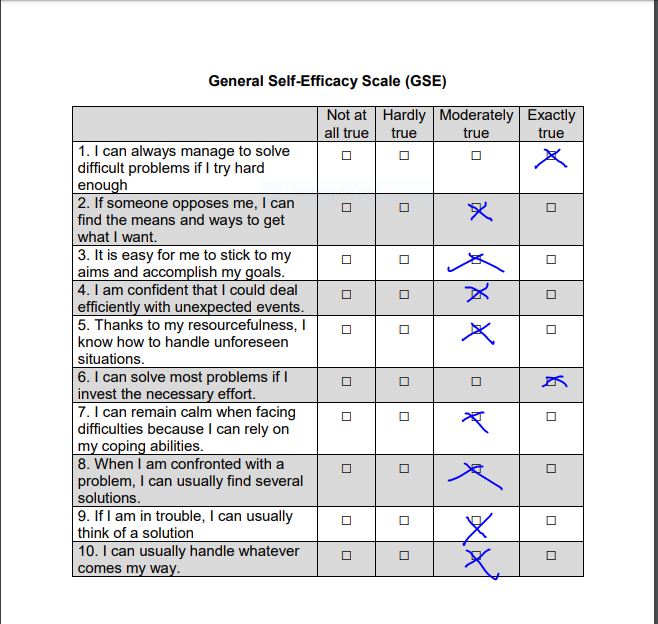
My mean score: 32
As a student I believe I am an overachiever or a very hard worker. School is one of my major triggers, but it is the one thing I believe that I can actually control. I can control my grades through my work, whether I work hard or overwork myself is the trigger. However, I am also a major procrastinator, which throws my anxiety through the roof. I have always prided myself on getting good grades and maintaining a good grade point average. In fact, without that ability my school career would have been over before it started. My actual level of confidence as a student varies from, I know I can get a good grade on this because I know the material to, I am going to fail, despite preparing the same way in each situation. I have a need to succeed, a need to be successful, to be worthy of a better future and it easily destroys my confidence. Increasing my confidence levels would be hand-in-hand with depleting my procrastination. Without procrastinating, I honestly think that my confidence would skyrocket. Looking at my self-efficacy score makes perfect sense because it is combined with my confidence. Most of my answers were 3s and could easily be changed to 4s with a decrease of procrastination and an increase of confidence. I believe that some of the answers are also due to making myself appear modest, as I am not one to boast. If I think too highly of myself, it could easily lead to my downfall as a good student in my opinion.
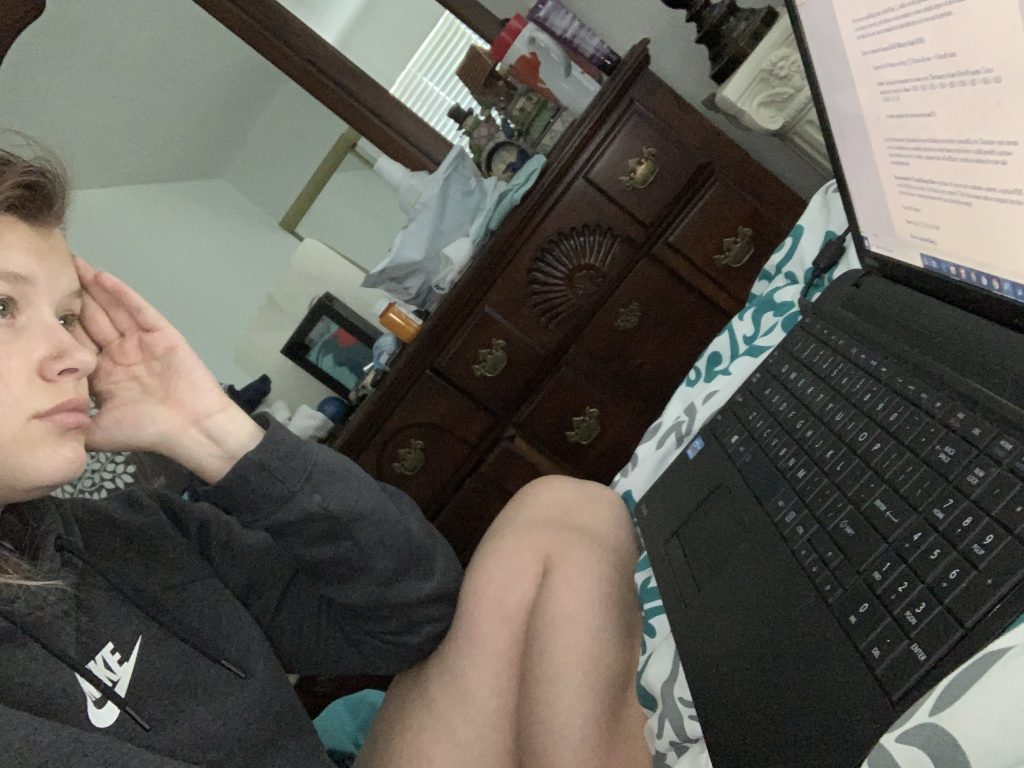
I chose this image because it reflects me. It shows the stress on my face that I have caused from procrastinating. It shows the eye bags of worry and loss of sleep. To me it shows the typical college student trying to make it in the adult world. I am not my planners filled with dates, I am not due dates, I am not assignments. I am human, and sometimes I forget that just like many other college students.
Blog 1:
My expectations for Psychology 304: Social Psychology are like the objectives of the course, where I expect to gain a further understanding in the cognitive processes of the brain during social situations and gain knowledge about relationship building processes. This course will be extremely helpful in my future, both scholarly and in daily life. In my scholarly future, I hope to be an art therapist or a clinical children’s psychologist, so the first objective of procedures for experimentation on behavior analysis is perfect. The second objective will help in my daily life and in my future career as I assess and, as it states, “attempt to understand others” to build relationships. The third course objective is to understand the formation and change of attitudes in relation to behavior, which is easily useful, especially in my future career with children as I try to get them to be open with me. The fourth course objective is both interesting to me and necessary to understand for my future career, as many children face prejudice and discrimination, which can be an undermined cause to their problems. The fifth objective, which deals with forming close relationships, is extremely useful in daily life, as I assess my issues and my client’s issues regarding close relationships, or relationships in general. The final course objective is exactly what I expect to gain from this course: “to make connections between courses and outside experiences.” I hope to take what I learn and apply it to my daily life and my career education process. To ensure my success in the course, I will do my assignments ahead of time, which will leave me time if I need to ask clarifying questions. I will also check daily, and complete work daily to stay ahead and on time with all assignments and readings. I want nothing but success in this course, as psychology is one of my favorite subjects and is going to be what I do for the rest of my life.
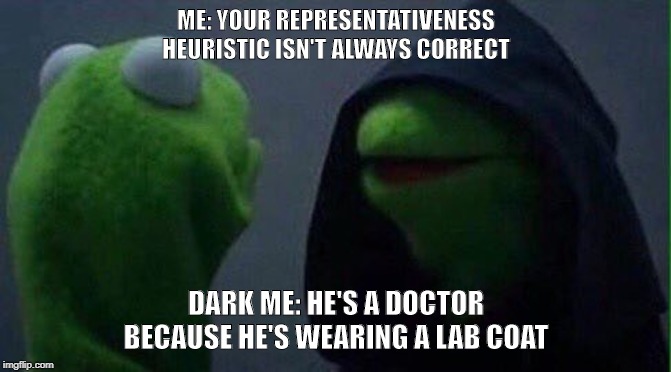
Kermit the Frog Studies Social Psychology
I created this meme to reference the second chapter, where I learned about heuristics and how the unknown is answered by the representativeness heuristic based around resemblance to another stimuli. The original Kermit reflects the one that has learned about heuristics in this manner and Dark Kermit represents the heuristic itself and its automatic response. This meme is also meant to represent the understanding of concepts learned in this course and an attempt to relate those concepts to the physical world.